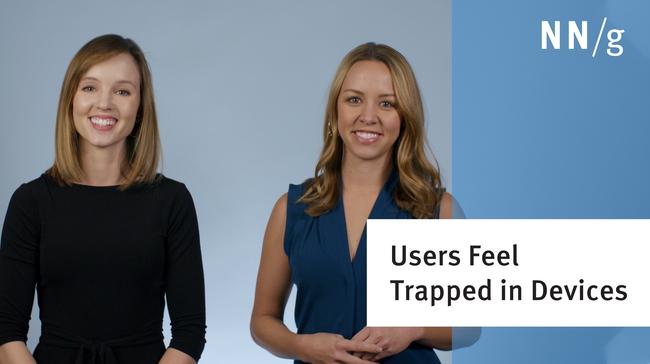Our recent research on how users read on mobile devices has uncovered something of a paradox:
- Killing time is the killer app of mobile. As we've seen since our first mobile usability studies 11 years ago, killing time is the perfect match for mobile devices because they're readily available when users are waiting around for something to happen. Favorite time-wasters include gossip, games, and sports. But even a seemingly serious task like checking the stock market is often no more than a time-killing episode in which users look up the current index numbers with no intent to trade.
- Mobile users are in a hurry and get visibly angry at verbose sites that waste their time.
How can people simultaneously want to kill time and get angry when their time is wasted? A conundrum to be teased apart.
The solution to the puzzle lies in recognizing that even relaxation is purposeful behavior: according to information foraging theory, users seek to maximize their cost/benefit ratio. That is, people want more thrills and less interaction overhead.
Sadly, interaction costs are inherently greater in mobile, which is why we need to focus mobile content even more tightly than content for desktop websites. Here's a typical example from one of our recent studies:

CNN News app, as shown on a study participant's phone.
(The above picture is a frame from the video recording of our usability study. Usually, I take screenshots directly from the site or app, but in this case, the story was already gone from the app by the time we finished the study. That's why recording high-quality video is a safe backup, but it's also something that's trickier in mobile studies than in traditional PC-based user testing. For more on this problem, see our seminar on User Testing.)
Filler = Bad
In reading the above "breaking news" story about a tornado, one test user found commentary from local people and said, "I don' t need to know what everyone else is saying and the event from their point of view. I don't mind a quote from a local leader, but all this to me is just filler, and I wouldn't read it."
She went on to say, "This is what came to me as breaking news? That's too much. It should be: This is what happened, and this is what's going on."
Several other test users made comments about not wanting to read entire news stories — especially "filler" content — on their phones. Users didn't want to bother with extra, secondary stuff, particularly in mobile apps designed for quick information consumption. They just wanted to know the main points.
You might ask why people don't simply stop reading once they've consumed as much information as they want about a given topic. Sure, users do stop reading and are quick to leave sites. But they still feel drawn in by the writing and often skim more words than they really appreciate. And, after doing so, they feel duped because they didn't get sufficient payoff from investing their precious time.
Two solutions:
- Cut the fluff. In particular, ditch the blah-blah verbiage.
- Defer background material to secondary screens that are shown only to users who explicitly ask for more info. Such additional content supports people who have extra time on their hands or an exceptional interest in the topic.
When writing for mobile users, heed this maxim: If in doubt, leave it out.
Full Report
The full report with all our research into mobile user experience with actionable design guidelines for mobile sites and apps is available for download.





Share this article: